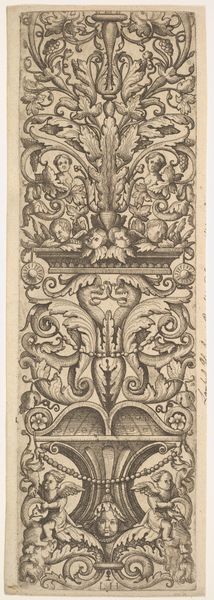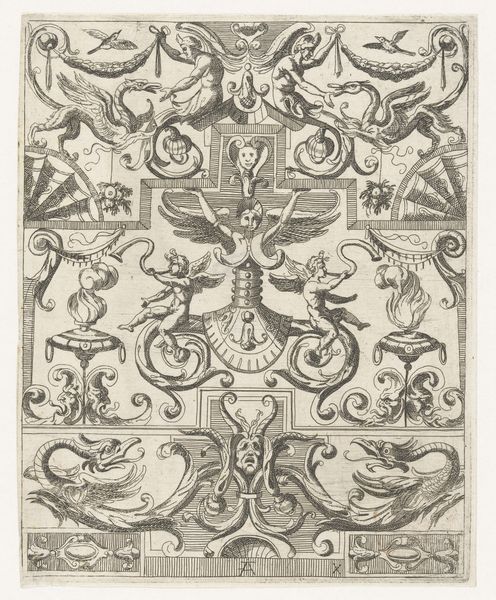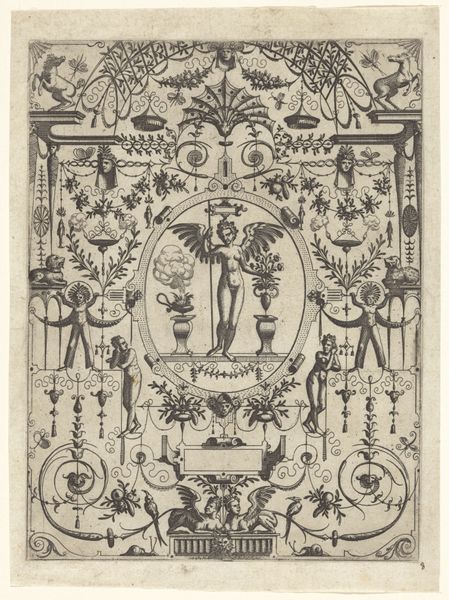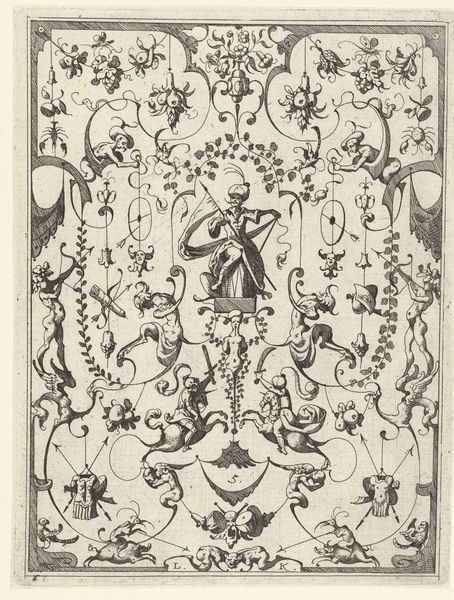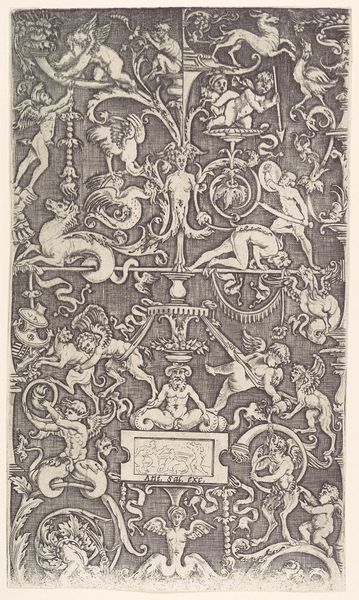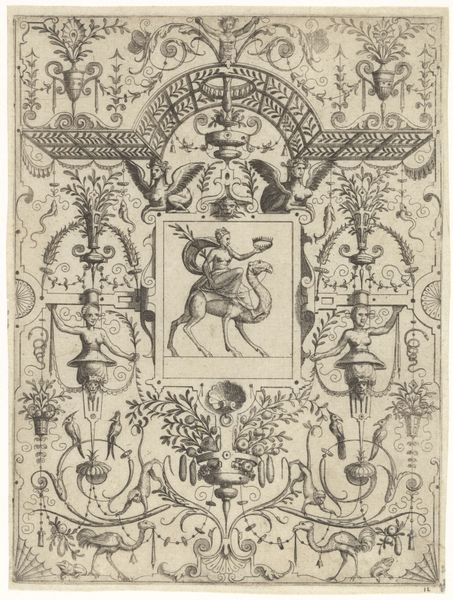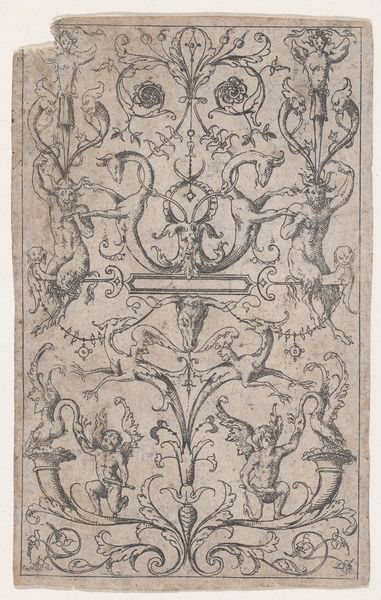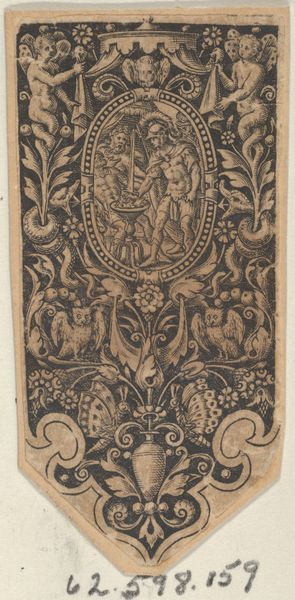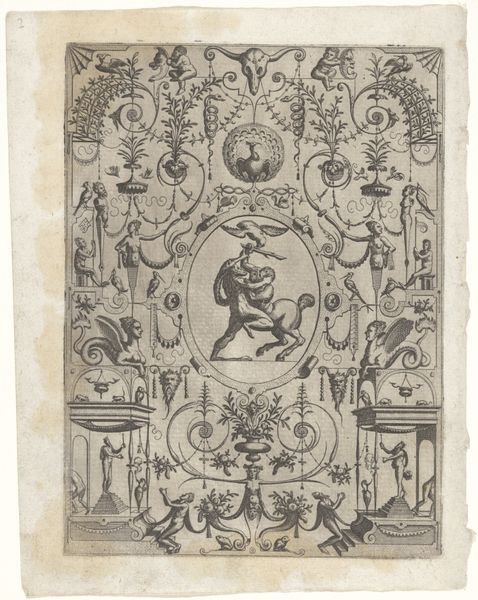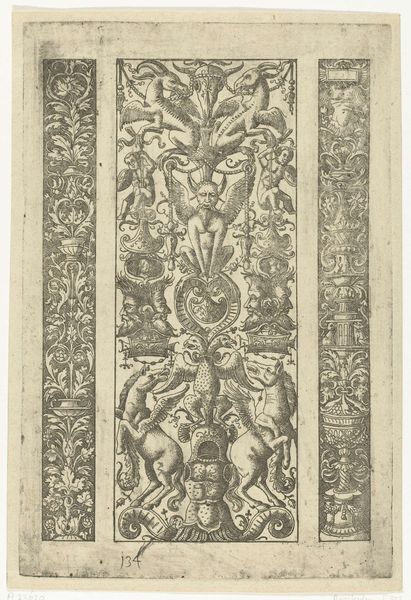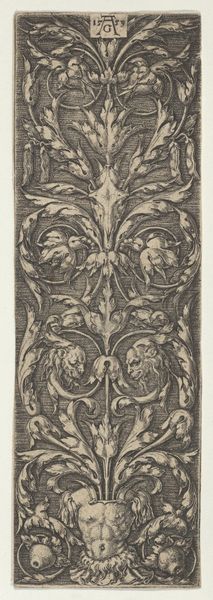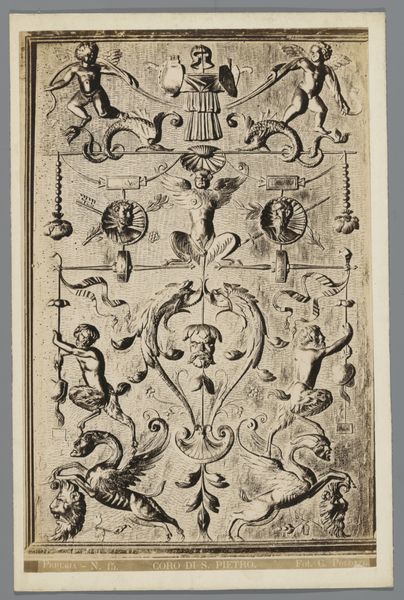
Dimensions: Sheet: 2 5/8 in. × 2 in. (6.7 × 5.1 cm)
Copyright: Public Domain
Curator: This intricately designed print is entitled "Bellone," and it's attributed to Étienne Delaune, created sometime between 1540 and 1583. The work is held at the Metropolitan Museum of Art. Editor: My first impression is how incredibly detailed it is, almost like a miniature world. It is absolutely symmetrical! Look at how the artist manages to organize such a high density of symbolic forms in balance. Curator: Absolutely. Delaune, working in the Renaissance, excelled at creating these small-scale decorative prints, often intended for luxury goods or personal adornment. It reflects a culture that celebrated both artistry and the display of wealth and erudition. Editor: Yes, and if you consider the labor involved in producing the engraving – the precision and the time, one appreciates its material value beyond mere decoration. The controlled line, achieved using specialized tools like burins, is crucial to appreciate the degree of handwork. Curator: Precisely. "Bellone" itself is a depiction of the Roman goddess of war. Consider the broader context. The 16th century was a time of significant political and religious conflict. Bellone, in this ornamental setting, becomes less a figure of immediate war and more an allegorical symbol, perhaps of power and statecraft. Editor: The way Delaune merges the figurative and the ornamental does point to the decorative purpose more than the military one. But even that can’t diminish its communicative value. How it was actually made – by what engraver with what social standing – must matter a lot too. Curator: It’s an artwork steeped in history, from its mythological subject to its role in 16th-century print culture and design, a testament to the social role of imagery. Editor: A fascinating blend of labor, symbolism, and material history. Understanding the process only enriches the artwork's presence in contemporary society. Curator: Indeed. Delaune’s "Bellone" continues to be an entry point for grasping how societies translate concepts like "power" and "conflict" into beautiful works. Editor: The kind of object that carries its own weight.
Comments
No comments
Be the first to comment and join the conversation on the ultimate creative platform.

